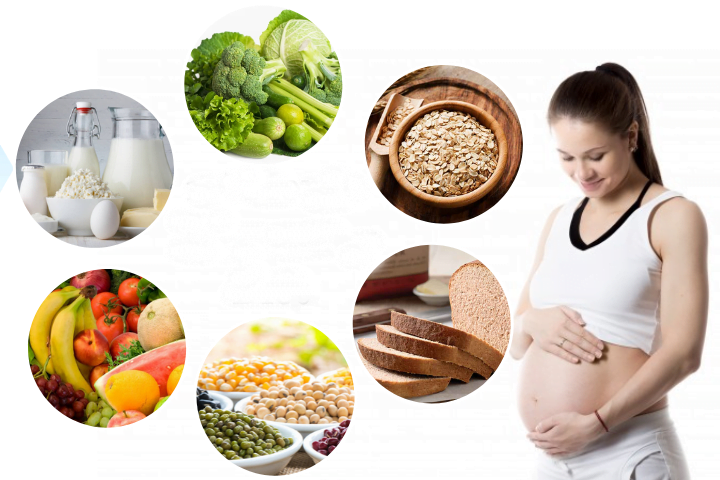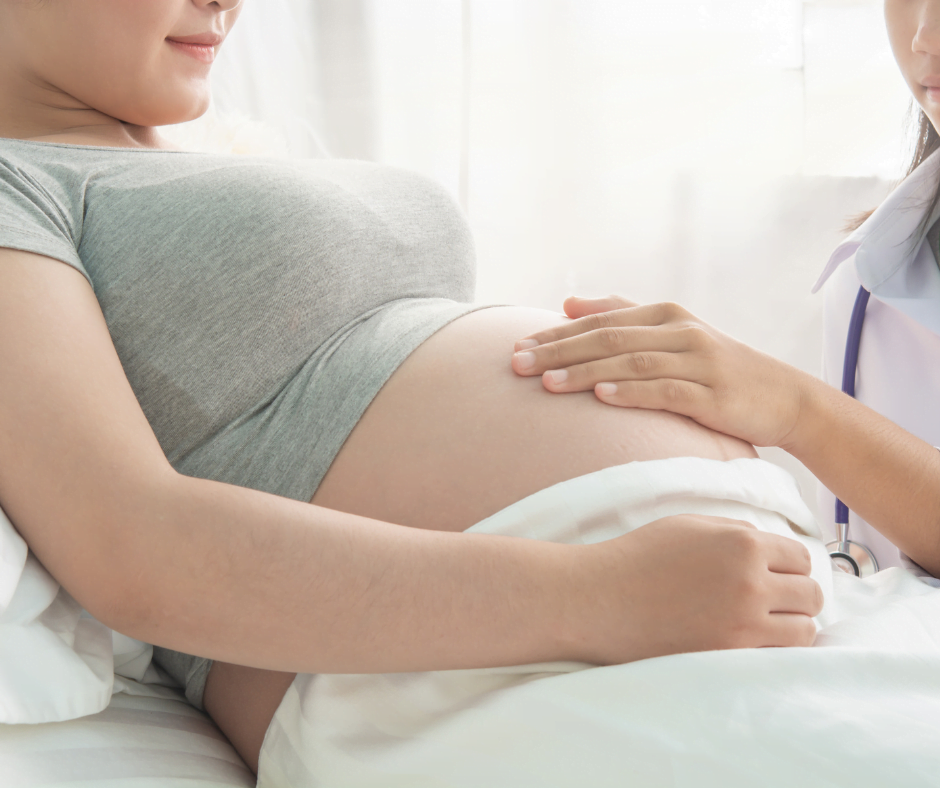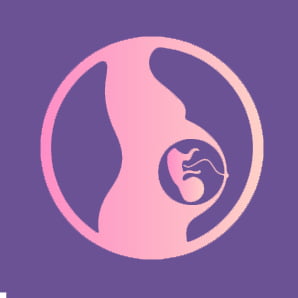risk pregnancies :Pregnancy is divided into three stages with a total of 9 months (40 weeks or 280 days), and each stage has its risks (risk pregnancies)
In the first three months or the first stage, most women tend to feel nausea, vomiting, and loss of appetite, and this means that the fetus does not receive adequate nutrition, so the mother shows signs of vitamin or mineral deficiency, and when mothers suffer from increasing severe symptoms during this period, they must consult Doctor to see possible treatment methods.(risk pregnancies)
Vaginal bleeding is a serious condition that can affect a woman during any stage of pregnancy and also poses a threat to the life of the mother and the baby. If you are experiencing such a condition, you should seek urgent medical attention
The first trimester is the first trimester, when medical professionals divide a full-term pregnancy into three stages, with a total of 9 months (40 weeks or 280 days). However, some pregnancies may last as long as 42 weeks or 294 days, and each of these stages has its risks.
Fetal growth and development during the first stage
Gestational age is determined by counting from the woman’s last ovulation, after which the subsequent growth of the fetus is classified in terms of structural growth and physiological development.
At the age of 5-6 weeks, the fetus shows signs of development in the central nervous system and spine.
At the age of 8-12 weeks, the fetus is about 2.5-6 cm long and has a large head. There is clear growth in the arms and legs, and the heartbeat begins.
Factors affecting fetal development
It includes genetic factors, environmental factors, nutritional factors, and behavioral aspects of the mother.(risk pregnancies)
Genes and genetic disorders in the family affect the development of the fetus, which means that it may be at risk, especially when the mother has a history of any of the following pregnancies:
Death of the infant, either during or after childbirth, including having had at least two miscarriages prior to the current pregnancy
premature birth (before 37 weeks of gestation)
Having a history of pre-eclampsia, chronic hypertension, overt diabetes mellitus and autoimmune diseases (risk pregnancies)
The environment is a factor that cannot be overlooked. Environmental factors that parents are exposed to affect pregnancy, including toxins in the home, items used for cleaning, or other household products that may be contaminated with chemicals, as well as smoke in homes where residents smoke.
The environment also includes the internal setting of the pregnancy i.e. the amniotic sac, amniotic fluid, placenta and uterus all of which must function in an integrated manner. Moreover, the medication used by the pregnant mother is also important because some medications can endanger the fetus, so a pregnant woman should not take any medications other than those prescribed by the doctor.
Eating during pregnancy

Diet and nutrition play an important role during pregnancy, as the diet should be varied and balanced, and the amount consumed should be moderate, especially during the first trimester. The pregnant woman should follow a diet consisting of the five main food groups in moderation, with a special focus on foods rich in folic acid, as this substance plays a major role in the production of the various organs and brain cells of the fetus.(risk pregnancies)
The right food for women in the first three months of pregnancy
There are also some foods that should be completely avoided during the first trimester of pregnancy, including raw foods, foods that contain monosodium glutamate (MSG), fatty foods, especially those that are high in sugar and fat, and all caffeinated drinks should be avoided. and alcohol throughout pregnancy.
You should eat the following types of foods in abundance:
Protein: Protein should be obtained from various sources, with a focus on protein found in fish, soybeans, eggs, skinless meat, or drinking one or two cups of milk daily.
Vitamins: Increasing the intake of vitamins helps keep the body strong and balanced and also helps in the growth and development of the fetus. Fruits and vegetables are among the best sources of vitamins. Women should consult a doctor if they want to take vitamin supplements such as vitamin A, B, C, D, E, K In cases where pregnancy causes bouts of constipation, it is recommended to increase foods rich in fiber.
Various minerals: Iron is a particularly important mineral because it is a major component of hemoglobin in the blood of the mother and the child, and among the foods that contain high levels of iron are liver, red meat, egg yolk, and milk, however, most pregnant women are required to take iron supplements because the levels of iron found in the food consumed It is often not sufficient for their needs.risk pregnancies
Folic acid: This substance is necessary for the development of the brain and the central nervous system, and in the event of a deficiency of folic acid in the fetus, the bones of the skull or spine may not fuse properly. Therefore, it is recommended that women start increasing their folate intake at least three months before pregnancy, by eating green vegetables, soybeans, oranges, bananas, and milk with folic acid added.
Calcium: Calcium plays an essential role in the growth of bones and teeth. It is found in milk and food such as cartilaginous fish and small fish. Calcium supplements are also available.risk pregnancies
Water: During pregnancy, hydration is of additional importance to a woman’s body. So water intake should be increased to help blood circulation and relieve symptoms of constipation. In addition, increasing water intake can help prevent dehydration, which is very dangerous for pregnant women.risk pregnancies
Foods that should be reduced
Carbohydrates: They can be reduced by reducing the intake of products made from flour, rice, taro and potatoes, and also avoiding sugary foods, especially sweet fruits such as durian. Cane sugar, white sugar, coconut juice and soft drinks should also be reduced because in addition to increasing the risk of obesity, these foods can also increase the risk of diabetes in the mother and child.
Fatty acids: It is formed as a result of the decomposition of many fats and is divided into two main types: The first type is saturated fats, which pregnant women must limit because they are a major cause of coronary artery disease. Red meat, pork fat, coconut oil and palm oil are all rich in saturated fats. Mothers should also drink low-fat or fat-free milk.
The other type is unsaturated fats that provide the body with energy and help reduce cholesterol and thus reduce the risk of heart disease. More importantly, the following types of unsaturated fats are beneficial for a developing fetus: Omega-3 and Omega-6 fatty acids, which are classified as essential fatty acids because the body is unable to produce them on its own, which means that diet is the only way for the body to obtain them. Seaweed products contain omega-3 fatty acids, while omega-6 fatty acids are found in safflower oil, sunflower oil, and corn oil.
In addition, docosahexaenoic acid (DHA) and arachidonic acid (ARA) are also necessary for the development of the brain and eyeball in the fetus and are long-chain unsaturated fats.
Omega-9 fatty acids have a major role in the growth of nerve cell fibers in the brain (Axon & Dendrite) as well as the covering of nerve cell fibers. These acids are found in many foods, including butter, peanut oil, pork fat and olive oil.
Essential advice for pregnant women
In addition to understanding what it means to be pregnant and getting the right nutrients by following a healthy diet, the first thing a woman should do when she finds out that she is pregnant is to register with a trusted medical institution to get the necessary care.risk pregnancies
Immediately after that, she should do regular exercise and drink plenty of water. Clean (at least 6-8 cups per day) and avoid alcoholic or caffeinated beverages. Women who smoke should quit smoking, get enough rest, and not take any medications other than those prescribed by the doctor, in order to preserve the health of the mother and child.
Mothers should also take care of their personal hygiene and not be exposed to chemicals such as hair dyes and some forms of makeup and perfumes.
Another aspect that should not be overlooked is sexual intercourse during pregnancy. Both parties must be careful not to cause any strong effects on the mother’s abdomen.
General tips that can help in the development of the fetus
The mother who maintains a positive psychological state throughout the pregnancy will help the fetus to start growing strongly, and she can do this by regularly listening to the music she prefers and playing types of relaxing music for the child to listen to while he is in the womb, this helps in developing speech and voice in the child and there are general guidelines By placing the stethoscope near the abdomen before pressing the play button and listening to soothing sounds for about 10 minutes a day.
Risk factors to watch out for during the first trimester (risk pregnancies)

Hyperemesis gravidarum (morning sickness): Most mothers tend to feel very sick in the morning during the first trimester as they feel nauseous, vomiting and loss of appetite, however they must continue to eat properly as nutritional deficiencies can lead to mineral deficiency which can It can affect both the mother and the baby, which may result in the fetus not getting enough nutrition for brain development. Mothers who are deficient in minerals and vitamins should seek medical attention immediately if symptoms associated with morning sickness worsen.risk pregnancies
Vaginal bleeding: Bleeding flowing from the vagina poses a fatal risk to both the mother and the child, and this condition in particular is dangerous as it can occur at any time during pregnancy, so any signs of its occurrence require the mother to seek emergency medical care. (risk pregnancies)
Severe pain in the lower abdomen: Most pregnant women usually feel pain in the lower abdomen due to the stretching of the uterine muscles to support the fetus growing inside it. But when this pain becomes unbearably severe or lasts for long hours, in this case medical care must be sought to determine the cause of the pain.
The risks that pregnant women are exposed to during the first three months of pregnancy may also be due to congenital health disorders, including high blood pressure, kidney disease, cardiovascular disease, anemia, thyrotoxicosis, and thalassemia, and the mother’s age can increase the risks she is exposed to during her pregnancy. Therefore, mothers under the age of 16 or over the age of 40 are always advised to consult a doctor before trying to conceive.risk pregnancies
It is necessary to direct care and attention to the mother’s health during the first three months of pregnancy. The mother should also eat a varied and healthy diet, participate in regular light exercises, maintain her psychological health, avoid stress, as well as monitor any strange symptoms that may appear and not overlook them.risk pregnancies
Pregnancy under the care of a trusted medical institution and undergoing preeclampsia risk screening during the first trimester, as this screening can reduce the risk by up to 90% and help prevent preeclampsia by 70%. It is necessary for the pregnant woman to always adhere to the doctor’s appointments and consult him in the event of any disorders, and not to take any medication without consulting the doctor, in order to preserve the health of the mother and the child.

[…] risk pregnancies – What is a High-risk Pregnancy? […]